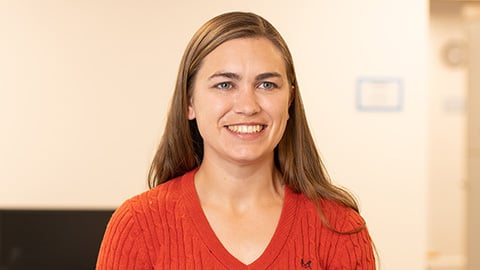
How to rescue medical devices from component problems
March 2024
by Sarah Knight, Head of Healthcare Technology at 42T.
In the strictly regulated world of medical device development, even the slightest hiccup can have profound implications. The failure, or unavailability, of a vital component late in the development can derail a project.
Or, if the product is already on the market, issues like these can potentially lead to supply shortages, complaints or in extreme cases, recalls.
Recognizing the importance of challenges such as these, we have been at the forefront of assisting our clients in navigating these complex waters.
%20(1).webp?width=730&height=487&name=shutterstock_250094488%20(1)%20(1).webp)
At 42T, we understand that every device is unique, and so are the challenges associated with it. Our seasoned team has worked across a spectrum of device industries, gaining invaluable insights into various failure modes. With this knowledge, we collaborate with our clients to comprehensively understand the intricacies of the issue.
Root cause analysis
When a component starts failing unexpectedly, we know it’s critical to understand why. Root cause analysis is a cornerstone of our approach, allowing us to unearth the underlying factors contributing to component failures.
By applying rigorous technical analysis, recognised techniques, and targeted expertise, we identify not just the symptoms but the fundamental reasons behind the failure. This proactive approach not only enables us to implement effective solutions but also empowers our clients with valuable insights for future risk mitigation and continuous improvement.
CASE STUDY As our client scaled up the manufacturing of a surgical instrument we designed, some devices were displaying a new failure mode that had never been seen during pilot assembly trials. A silicone rubber seal, intended to be removable, was becoming stuck to other components with no apparent cause. The product launch date was approaching, so it was critical to resolve this issue rapidly.
We mapped out the manufacturing process to identify potential causes e.g. material interactions, new cleaners or lubricants, different assembly jigs - and prioritised our investigations based on likely impact. A structured test plan enabled the manufacturing team to pinpoint the problem to glue vapour migrating from a nearby component under certain conditions.
We then identified that an alternative adhesive could eliminate the problem and supported our client to implement the change.
Evaluation and verification of alternatives
When faced with a critical component problem, swift and informed decision-making is paramount. We work closely with our clients to evaluate alternative solutions, leveraging our expertise to assess the feasibility and impact of each option.
.webp?width=730&height=410&name=Tilapia%20Bushing%20life%20test%20rig%20-%20adjusted%20(1).webp)
Once potential alternatives are identified, our team leads rigorous verification and validation processes. Thorough testing ensures that the chosen solution not only addresses the immediate concern but also complies with industry standards and regulatory requirements.
CASE STUDY A client who manufactures surgical equipment needed to replace a key component to comply with changing regulations. We researched available alternatives and worked with suppliers to identify candidate options. To verify that the new component would survive the challenging use conditions, we designed and built dedicated accelerated life-testing rigs that could be used to simulate many hundreds of hours of surgery.
Testing showed that two suggested alternatives gave equivalent performance to the previous design. In fact, subsequent analysis by CMM and SEM microscopy showed that they actually showed less wear, suggesting that our design change could extend the life of the device.
%20(1).webp?width=801&height=368&name=Tilapia%20bushing%20microscopy%20(2)%20(1).webp)
Empowering core product teams
By entrusting 42T with the resolution of component problems, our clients can keep their core product teams focused on planned development activities. This approach allows for a seamless integration of solutions, addressing problems swiftly and at an early stage, minimizing the impact on the overall project timeline.
CASE STUDY One of our clients was developing a new anaesthesia delivery system. While their development team focused on the most innovative modules of the system, other areas of the system were not being progressed.
We supported them in selecting a suitable OEM pump whose design could be adapted to meet the requirements of their system. We researched available equipment, analysed its characteristics against requirements, and worked with vendors to identify low-cost routes to delivering a custom design within commercial constraints.
Ensuring confidence in your product
In medical device development and manufacturing, unforeseen component challenges can be a stumbling block.
At 42T, by supporting our clients in understanding failure modes, evaluating alternatives, and implementing effective solutions, we empower them to navigate these challenges with confidence.
Our commitment is not just to rescue products from component problems but to ensure they sail smoothly toward success.
Read a selection of our case studies and insights here. Subscribe to our healthcare newsletter.

If you would like to find out more, please contact Sarah:
answers@42T.com | +44 (0)1480 302700 | Sarah Knight | LinkedIn
Sarah is a chartered engineer (IMechE). She holds an honours degree in Biomedical Engineering and a Master’s degree in Mechanical Engineering from Cambridge University.
She is also an experienced project manager with particular expertise in medical device development and has guided products through all stages of development from innovative concepts to detailed design, regulatory approval, and troubleshooting in manufacture.
Share this article:
Related Articles

Healthcare & Life Sciences
The future of home healthcare: trends and innovation

Healthcare & Life Sciences
Right to repair: reshaping the medical equipment industry

Healthcare & Life Sciences
The hidden risks with smart injectors - is high-tech sacrificing usability?

What will you ask us today?
We believe in asking the right questions to drive innovation; when we know the right questions, we generate the ideas to answer them.


%20(1).webp?width=816&height=544&name=shutterstock_163264799%20(1)%20(1).webp)